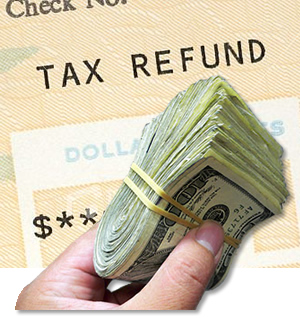4 Tips For Putting Your Tax Refund Back Into Your Home
 Are you expecting a tax refund after submitting your income taxes? Did you know that the average refund, which happens to be in the vicinity of 3000, can be reinvested into your home?
Are you expecting a tax refund after submitting your income taxes? Did you know that the average refund, which happens to be in the vicinity of 3000, can be reinvested into your home?
Some may get less, to the tune of a few hundred dollars, while others may get more, but here are 4 tips for putting your tax refund back into your home.
Reduce debt
As the housing market picks up and interest rates continue to be low, you may have been tempted recently to have taken a loan against your home to help fund a renovation project. Many homeowners have done so.
A smart move would be to apply the tax refund to pay down this or any other debt, but it’s wiser to pay off higher interest debt first.
Breathe new life in it
If there’s something you’ve been wanting to renovate, don’t wait anymore. Do it! It’s very likely that the refund will cover the costs of these smaller projects.
In doing so, you kill two birds with one stone first, you’re improving the functionality and beauty of the home, and second, you’re increasing property value simultaneously.
Boost energy efficiency
Regardless of how significant or insignificant the refund check, there are numerous things to do that can make the home much more energy efficient — like purchasing energy Star appliances or improving insulation.
An excellent investment that’s very affordable is a storm door that’s perfect for a home with an older front door. Invest in a water saving shower head, or perhaps a digital thermostat that’s programmable.
Insurance
For about 700 annually, the federal government provides homeowners with coverage through the National Flood Insurance Program. It’s a great deal they can help you save thousands in the event of a flood. Let’s face it, flooding can happen anywhere and at any time, and most policies don’t cover it. In general, policies will cover damages that come from above, including rain, but not waters that rise.
For a free estimate, visit FloodSmart.gov. Premiums will depend upon your area and likelihood of flooding. There is no reason to keep taking unnecessary risks.